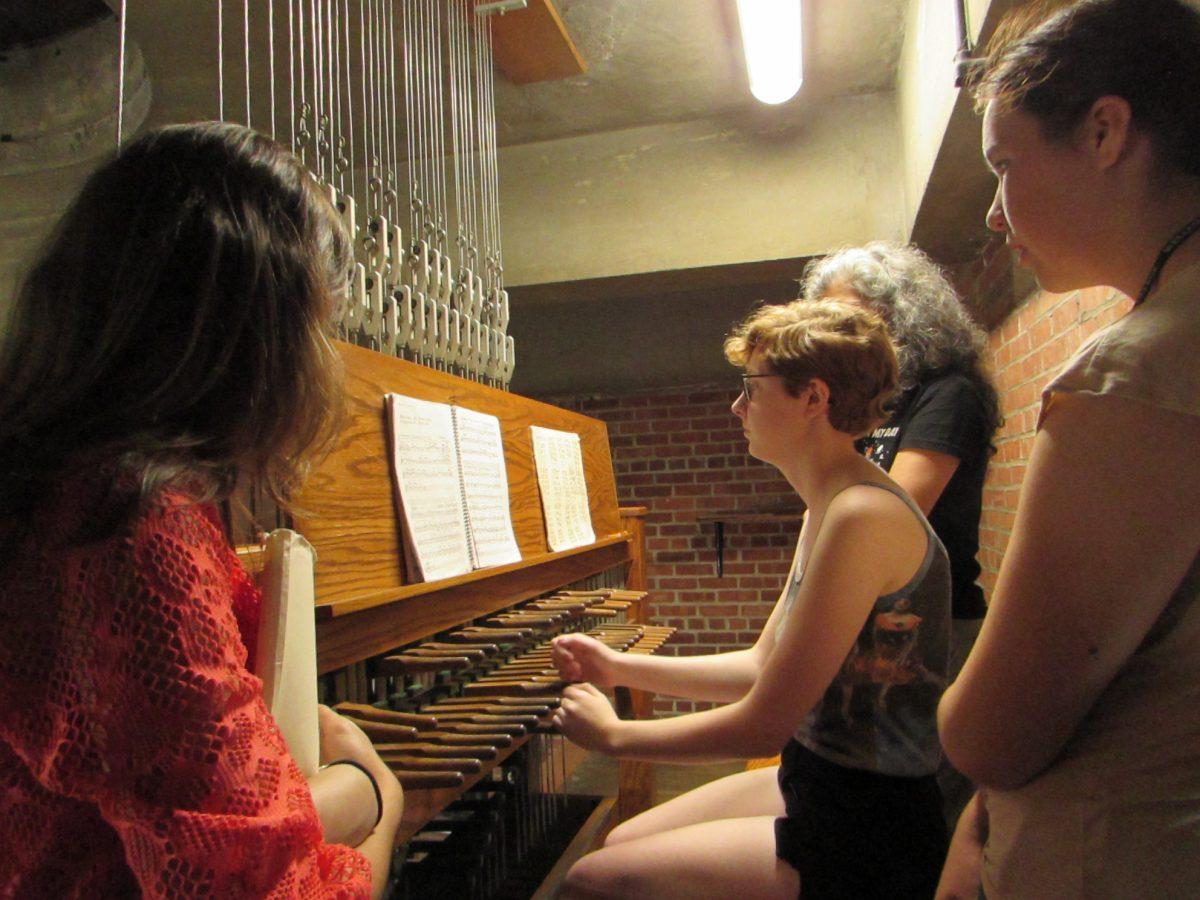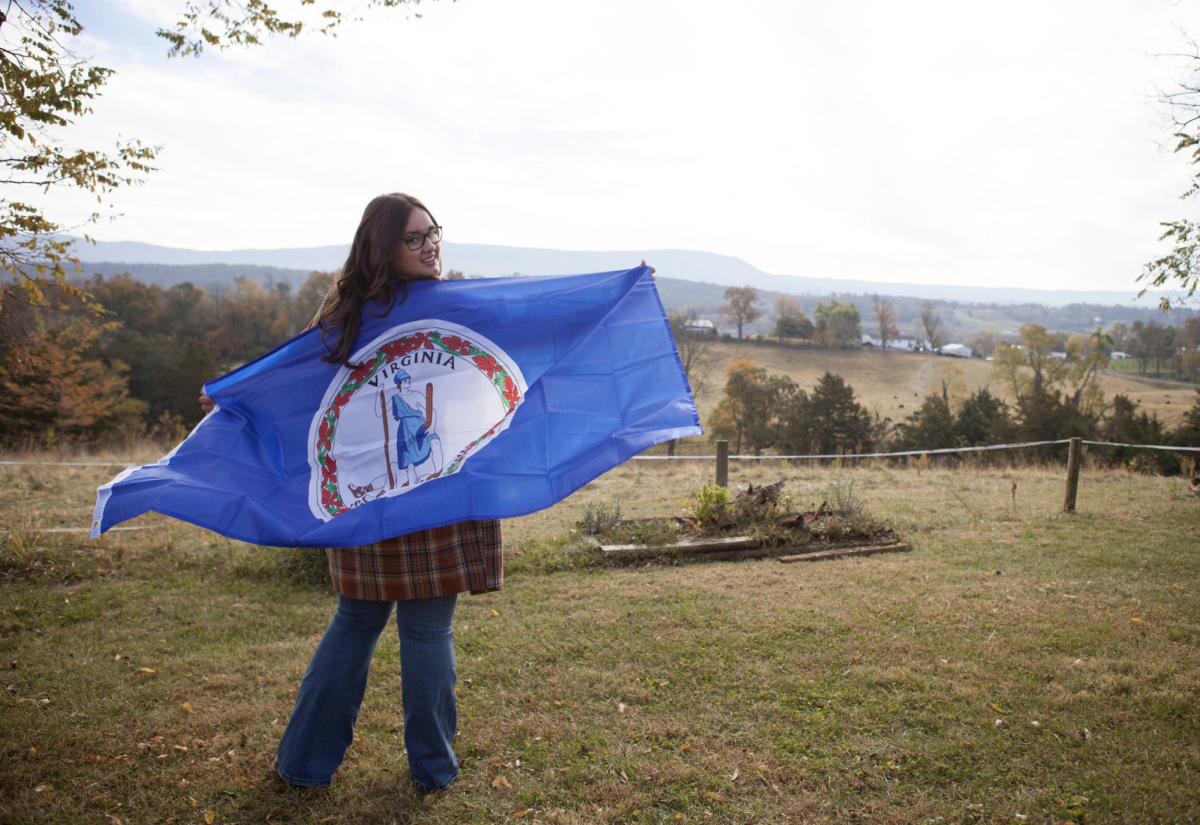As you’re walking around campus or perhaps rushing to your next class, you might hear eerie music floating in the air, emanating out of the bells on top of the Galen Stone Tower.
For almost 100 years, the Guild of the Carillonneurs has been performing on the weekends, between classes and at the College’s special events. The Guild currently consists of around 25 members, all Wellesley students.
“[The carillon] has been played by students, by members of the Guild, ever since it was first installed,” said carillon instructor and advisor Margaret Angelini ’85.
In 1931, an English foundry called Gillett and Johnston installed the bells in the Galen Stone Tower on top of Green Hall. At that time there were 30 bells, but since then the carillonneurs have acquired two more.
The bells themselves are actually located outside at the very top of the tower and are exposed to the elements. Each bell is connected to a string that extends to the floor below, where students can play the instrument by striking a keyboard of sticks called batons. Most notes are played with the fists, but the larger bells are played with pedals.
“It’s not the easiest instrument to play,” said Guild president Alison Draikiwicz ’18. “You’re playing notes with your fists [and] playing the pedals with your feet. The pedals are probably the hardest part; you have to make sure you’re perfectly coordinated.”
Compared with other carillon bells, Wellesley’s are actually considered to be light.
“The bottom bell, which sounds like the low G of a violin, weighs 1,620 pounds,” Angelini. The smallest bell of weighs about 15 pounds.
Angelini has had a long connection with the instrument. When she was a first year at Wellesley in 1981, she joined the Guild and played regularly. After she graduated, the Guild invited her back to continue teaching them. They fundraised so that they could pay her.
But a few years ago, Angelini formally became a member of the music department. As of 2014, students could receive credit if they took lessons with her.
The Guild chooses its members through an application period that takes place at the beginning of the fall and spring semesters. This semester, they accepted eight new students because several of their members graduated last year.
“We’re looking for a unique blend of attributes,” said Angelini. “We’re looking for people who are musical, who are willing to commit a good deal of time to the Guild. A student has to take lessons, practice, give concerts every other week [and] participate in open towers, master classes and road trips,” she said.
Once selected by the Guild, the new students are called apprentices. They train with Angelini on the practice bells until they are ready to give a concert, after which they become junior members. Many carillonneurs decide to stay junior members throughout their time at Wellesley; becoming a senior member requires enormous commitment.
One of the Guild’s newest members, Sammy Lincroft ’21, cannot wait to get her hands on the keyboard. “As soon as I found out that it was a thing for students to do, I wanted to play. I want to play as soon as possible,” she said.
As a new member of the guild, Lincroft will gain access to the tower, which is mostly closed to the public. But during the guild’s Open Towers you can get a chance to see where it all happens and listen up close.
Getting to the keyboard is quite a challenge. After taking the elevator up to the fourth floor of Green Hall, you must climb staircase after staircase. These staircases are dark and old, but through the tiny windows you can catch a breathtaking view of Wellesley’s campus, 120 feet in the air. Along the way you pass the practice bells and then, on the floor right above them, the keyboard of batons.
The area next to the performer is actually the most difficult place to hear the music.
“You hear the clack of the batons, but not the bells,” explained Angelini.
The best place to listen is outside the tower where the performers can’t be seen. Despite the anonymity, Eleanor Willard ’20 still feels nervous when she performs.
“I think the hardest part of playing the bells is knowing that everyone on campus can hear you,” she said.
But she admits that much of her worries are irrational. “A lot of people won’t notice if you play a wrong note because the bells are sort of distorted anyway,” Willard said.
Each member of the guild has a signature tune they play before their concerts. If you listen carefully, you might be able to tell who is playing. At the end of a concert, the performer always plays the “Queen’s Change.”
At times, the Wellesley carillon can be limiting because there are only 32 bells, and some of the music requires more than that. The carillonneurs adapt by substituting other notes to replace the deepest ones, which require the largest-sized bells.
“Our carillon is relatively light; it’s not that hard to press the notes. As the bells get heavier, then it gets harder to push them down,” Draikiwicz said.
The Guild often travels to other universities to get a feel for other carillons. Last year, for example, they took a road trip to Princeton and performed at the Grover Cleveland Tower, which has a total of 67 bells. This year they will be traveling to Yale’s bell tower.
Besides giving concerts during the college’s special events, being a member of the guild requires transcribing music for the instrument. Though there is music written specifically for the carillon, much of the students’ repertoire was originally written for other instruments.
Thanks to past and current members’ transcriptions, the carillonneurs can play anything from a Bach prelude to Abba’s “Dancing Queen.” One of Draikiwicz’s personal favorites is “When You Wish Upon a Star” from the Pinocchio movie.
“For me, it’s important that when people hear the carillon, they enjoy what they hear,” said Angelini. “I want people to feel like, ‘I know I’m at Wellesley because I hear the carillon.’”
So the next time you hear the carillon on your way to class, take a minute to appreciate the fact that there’s actually someone up there performing for you using both their hands and feet, transforming bell vibrations into music.
“No other instrument is tuned like the bells,” said Angelini. “It’s a sound that you’re not going to get anywhere else.”






